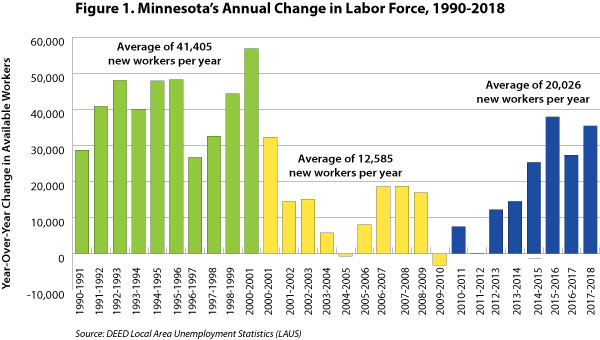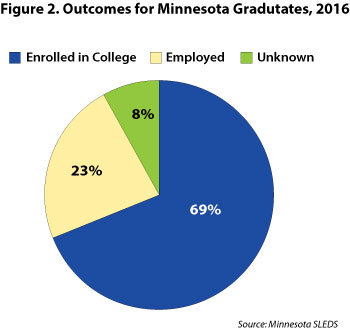by Cameron Macht
February 2019
When people start talking about “seniors” and their job prospects in the spring, typically they are referencing students who have reached the 12th grade in school – usually 17, 18, or 19 year olds. These seniors are facing the end of their high school experience, with adulthood right around the corner, so many of these seniors are often asked: “What are you going to do with your life?” The focus is usually on what these youngsters plan to do for a career once they graduate.
However, “seniors” can also refer to a very different stage of life, but since there’s no official age designation, the second group is harder to pin down. Defined in Merriam-Webster’s Dictionary as “an elderly person, especially one who has retired,” “senior citizen” is a common term for people who have reached retirement age. Traditionally, the full benefit age for receiving Social Security retirement benefits was 65, but a 1983 amendment to the law raised the retirement age for full benefits to 67 for people born in 1960 or later.1 Beyond that, AARP now offers membership to people aged 50 years and older, making the definition of a senior citizen pretty broad.
Whatever the exact age, it used to be that this group of seniors were facing the end of their working careers. Ironically, people would also ask them what they were planning to do with their lives, but it usually no longer involved a job. With rising life expectancies and on-going financial needs, that has changed – it is much more likely that a senior citizen will continue working. To that end, both of these groups of “seniors” will have a big impact on Minnesota’s labor market and economy in the next couple of decades.
The future plans and job prospects for both groups of seniors have become much more important as Minnesota’s labor force growth has slowed over the past three decades, dropping from an average of 41,405 new workers per year from 1990 to 2000 to an average of 12,585 new workers per year from 2000 to 2010, then rising again to just over 20,000 new workers per year so far this decade. While labor force growth was slow from 2010 to 2014, the state has added more than 25,000 workers each of the past four years, including more than 35,000 workers in both 2016 and 2018 as the strong economy has pulled more workers into the labor force (see Figure 1).

Unfortunately, these may be temporary gains – the state’s workforce is projected to expand even more slowly in the future. Labor force projections for 2020 to 2030 from the Minnesota State Demographic Center range from about 55,000 new workers to an estimate of just under 75,000 new workers from the author’s calculation combining current participation rates by age group with population projections by age group (see Table 1). Either way, that would mean annual labor force growth of only 5,500 to 7,500 additional workers per year, at best just one-fifth of the rate experienced during the 1990s and, at worst, less than half the slowest growth experienced during the 2000s.
| Table 1. Minnesota Labor Force Projections, 2020-2030 | |||||
|---|---|---|---|---|---|
| Age | Numeric Change | 2020 Labor Force Projection | 2030 Labor Force Projection | 2020-2030 | |
| Percent Change | |||||
| 16 to 19 years | 169,642 | 167,530 | -2,112 | -1.2% | |
| 20 to 24 years | 342,326 | 378,558 | 36,232 | 10.6% | |
| 25 to 44 years | 1,234,214 | 1,290,510 | 56,296 | 4.6% | |
| 45 to 54 years | 602,222 | 611,017 | 8,794 | 1.5% | |
| 55 to 64 years | 560,791 | 489,812 | -70,979 | -12.7% | |
| 65 to 74 years | 157,518 | 193,484 | 35,966 | 22.8% | |
| 75 years and over | 24,211 | 34,278 | 10,068 | 41.6% | |
| Total Labor Force | 3,090,925 | 3,165,190 | 74,265 | 2.4% | |
| Source: calculated from Minnesota State Demographic Center population projections and 2013-2017 American Community Survey 5-Year Estimates | |||||
In the past Minnesota's labor pool deepened with a steady stream of new workers from several factors including population growth and in-migration, high and rising labor force participation rates for females, and a stable flow of high school seniors graduating into the workforce. All of these are important sources of labor force growth, but the latter is the focus of this article.
Based on numbers, there were always far more 12th graders than there were people turning 65, contributing to the state's rapid and enviable gain of more than 700,000 net new workers from 1980 to 2000, a 33.6 percent growth rate. According to the 1980 Census, there were 1,030,159 school-aged children, 5 to 19 years old, in the state, which was more than double the number, 507,394, of 55 to 69 year olds. At the time, there were about 74,500 students in 12th grade, but likely less than 30,000 65 year olds.
During the 2000 Census there were approximately 31,300 people age 65 years old in the state compared to about 67,000 12th graders, meaning there were still more than twice as many people ready to enter the labor force as there were potentially ready to leave it. In 2017 there were 74,994 12th graders compared to 57,079 67 year olds, a gap of 17,915 more students than prospective retirees (see Table 2). While that means there were still more people potentially ready to join the labor market than leave it, the gap was clearly narrowing. Fast forward to the other end of Table 2, and the significance of the shifting demographic wave becomes obvious.
| Table 2. Minnesota Population by Age and Student Enrollment by Grade Counts, 2017 | ||||
|---|---|---|---|---|
| Grade | Number | Age | Number | Number of Students Compared to Adults |
| Kindergarten | 71,769 | 55 years | 79,370 | -7,601 |
| 1st grade | 70,629 | 56 years | 81,026 | -10,397 |
| 2nd grade | 71,529 | 57 years | 81,384 | -9,855 |
| 3rd grade | 72,635 | 58 years | 78,143 | -5,508 |
| 4th grade | 74,275 | 59 years | 77,247 | -2,972 |
| 5th grade | 74,584 | 60 years | 75,558 | -974 |
| 6th grade | 73,507 | 61 years | 72,083 | 1,424 |
| 7th grade | 72,196 | 62 years | 70,843 | 1,353 |
| 8th grade | 72,425 | 63 years | 68,026 | 4,399 |
| 9th grade | 71,419 | 64 years | 65,348 | 6,071 |
| 10th grade | 70,301 | 65 years | 63,194 | 7,107 |
| 11th grade | 71,097 | 66 years | 59,983 | 11,114 |
| 12th grade | 74,994 | 67 years | 57,079 | 17,915 |
| All Grades | 964,052 | 55-67 years | 929,284 | 34,768 |
| Source: Minnesota Dept. of Education, U.S. Census Bureau | ||||
According to the Minnesota Department of Education's student enrollment data, there were 71,769 kindergarten students in Minnesota in 2017-2018, compared to 79,370 people aged 55 years according to the Census Bureau. A lot can change for both of those populations over the course of 12 years, but if nothing does, that would leave a deficit of 7,600 more people reaching retirement age than graduating from high school.
The tipping point actually occurs with 2017-2018's 5th grade class – they are slightly outnumbered by 60 year olds, and the imbalance between students and adults grows in younger grade levels. Both the 1st and 2nd grade have deficits of around 10,000 people compared to the 56 and 57 year old age cohorts, which both number over 81,000 people in 2017 (see Table 2).
As shown in Table 2, grade level enrollments are relatively consistent over time, ranging between 70,000 and 75,000 students each year for the next 13 years. In contrast, the difference between the growing number of 55 to 60 year olds compared to the smaller number of 64 to 67 year olds is substantial, again demonstrating that much of the labor force shift comes from the aging population.
Almost 70 percent of Minnesota high school graduates immediately enroll in post-secondary education after their senior year, often delaying their entrance to the workforce (see Figure 2). Another 23 percent find jobs and start their careers, while outcomes for the other 8 percent are unknown because of data limitations with Minnesota's Statewide Longitudinal Education Data System. SLEDS matches student data from pre-kindergarten through completion of postsecondary education and into the workforce, providing a detailed look at labor market outcomes for students.2

The "Entering the Workforce" report from SLEDS shows the number and percent of graduates who enrolled in post-secondary education in the fall after graduation and those who did not enroll but instead found employment. It is important to note that graduates could be enrolled in college in Minnesota or out of state, whereas employed graduates are only those found working in Minnesota a year after graduation. Graduates not found to be enrolled or working in Minnesota are included in the unknown count.
Further details show that over half of the graduates who went to work were working less than 20 hours per week, compared to 31 percent who were working 30 hours or more per week. By industry, the largest number of high school graduates went to work in Trade, Transportation, and Utilities – primarily in Retail Trade, followed closely by Leisure and Hospitality. Graduates earned the highest wages in Construction, Natural Resources, and Manufacturing (see Table 3).
| Table 3. Minnesota Graduates by Industry of Employment, 2016 | ||
|---|---|---|
| Industry | Percent | Average Hourly Wage |
| Trade, Transportation, and Utilities | 30.0% | $11.49 |
| Leisure and Hospitality | 25.0% | $11.27 |
| Educational and Health Services | 13.0% | $11.99 |
| Professional and Business Services | 11.0% | $12.42 |
| Construction | 6.0% | $16.32 |
| Manufacturing | 6.0% | $13.26 |
| Other Services | 4.0% | $11.34 |
| Financial Activities | 2.0% | $12.87 |
| Information | 1.0% | $12.29 |
| Natural Resources and Mining | 1.0% | $13.28 |
| Public Administration | 1.0% | $11.11 |
| Source: Minnesota SLEDS | ||
For both sets of seniors a high school diploma has been the basic foundation to start building a career. For almost half (46.8%) of Minnesotans aged 65 years and over a high school diploma is the highest level of education ever attained, and many of these senior citizens can look back on successful careers in a wide variety of industries. Depending on their financial situation and work interests, they may need or want to continue using their skills in the workplace.
Likewise, 23 percent of current high school seniors are going straight to work, and they are being desperately sought out by employers who are looking for applicants to fill their available jobs.
Indeed, the question for both groups of seniors is: what jobs are they prepared to fill, and do the graduating seniors have the basic skills to start climbing the career ladder and replace the outgoing seniors? As the labor market tightens in the future, we can definitely say that only time will tell.